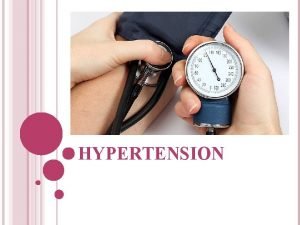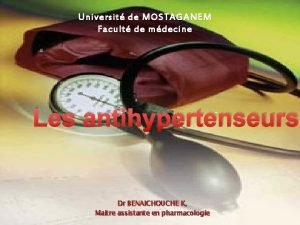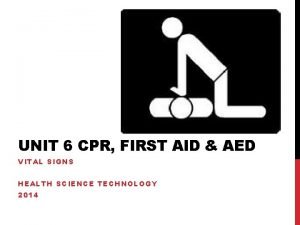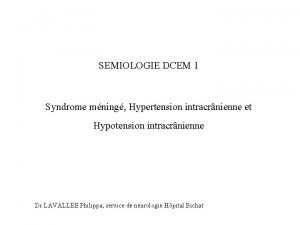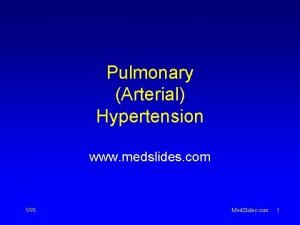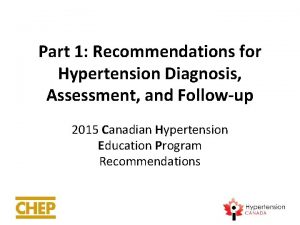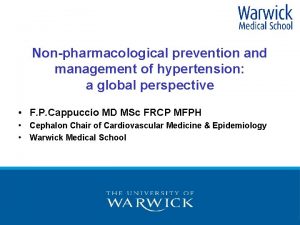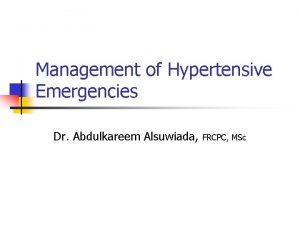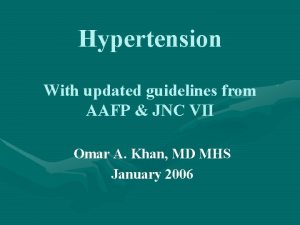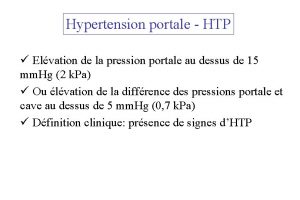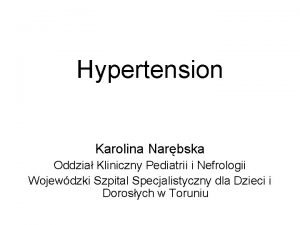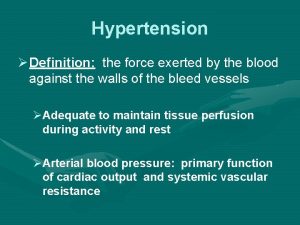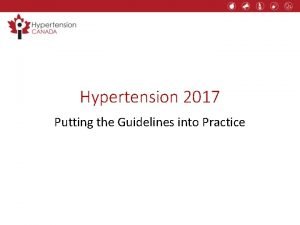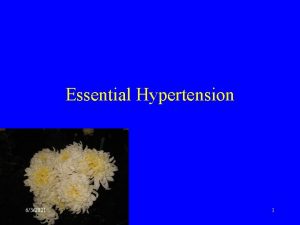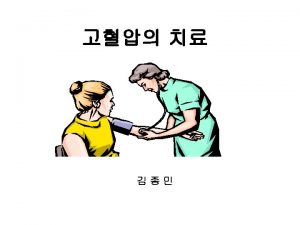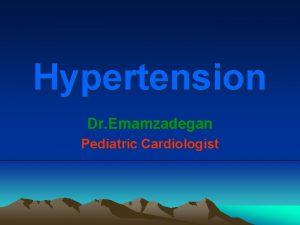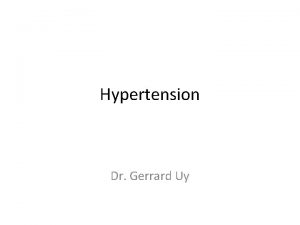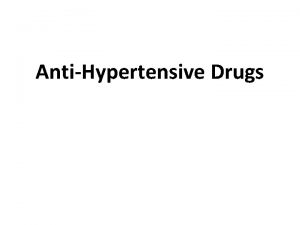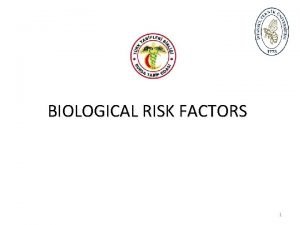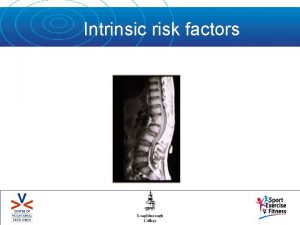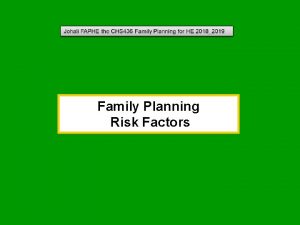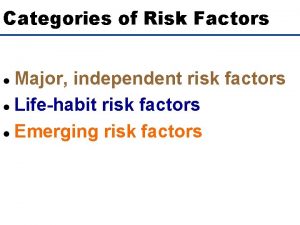Risk factors for hypertension Kapustin N G Kyakhtinsky

















- Slides: 17

Risk factors for hypertension Kapustin N. G. Kyakhtinsky branch "BBCSWB»

Urgency For the modern world, cardiovascular disease is the main cause of death. The prevalence of risk factors among the population in Russia is at a high level. The main reasons are endogenous and exogenous factors

The study was conducted on the basis of GBUZ Kyakhtinskaya CRH, among patients. The sociological survey was attended by 120 respondents, according to gender: males were 36 %, female-64 %, age: 35 -50 years and older. Purpose of research: - Identifying the level of awareness of patients about the presence of risk factors in the occurrence of hypertension Research problem: - Determine the level of awareness of existing risk factors in patients with hypertension

Risk factor In the questionnaire , we divided the risk factors affecting GB into two large groups 1. Endogenous (fatal) 2. Exogenous (disposable)

ENDOGENOUS RISK FACTORS Age and gender floor man women year 50 years (42%) 50 -73 years (68%) After 50 years, the risk of hypertension increases significantly, but not equally for all. In menopausal women, the level of estrogen decreases, their protective effect on the cardiovascular system disappears, the disease increases, which according to our data was 68% in women.

ENDOGENOUS RISK FACTORS Heredity American authors note that the genetic causes have not been fully studied, but if close relatives suffer from hypertension, the probability of transmission of the disease by inheritance was 40%.

DISPOSABLE RISK FACTORS (Exogenous)

Smoking is the most common among the working-age population, especially among men. Out of 120 examined patients smoke: men and women (60%) Smoking contributes to the temporary narrowing of blood vessels, reduces their capacity, which leads to increased blood PRESSURE.

Use of alcohol 15 % of the surveyed, drink alcohol. Alcoholic beverages increase blood PRESSURE by 5 -6 mm Hg. St. and removes magnesium from the body, which is so important for the activity of the heart muscle.

Stress 60% of respondents experience stress for various reasons. Prolonged stay of the body in stress increases the fragility of the bones, as the process of washing calcium from the bones begins. Stress stimulates the excretion of magnesium. The balance of calcium and magnesium is so important for the health of the heart muscle (calcium stimulates contraction and magnesium — relaxation).

Excess body weight Of the 120 respondents surveyed, 75% are overweight. Overweight is an additional burden on the heart. Gradually accumulating in the body fat is deposited on the walls of the arteries, which leads to increased blood pressure.

Unbalanced food and abuse of table salt Unbalanced nutrition and salt abuse as risk factors were (40 %)examined patients. The use of a large amount of salt with food helps to retain water molecules in the cavity of blood vessels , increase blood pressure, which adversely affects the walls of blood vessels and myocardium.

Hypodynamia In 15% of the surveyed, this risk factor contributes to the accumulation of excess body weight, which leads to the progression of hypertension. During inactivity, the vessels lose their tone.

Measurement of blood pressure and heart rate According to the results of the survey, 55% of the surveyed are able to independently measure blood PRESSURE, and determine the pulse rate.

Conclusion • Hypertension affects more people over 50 years. • Most of the respondents do not know how to use the device for measuring blood pressure. 38% are obese and 37% overweight. • More than half of the respondents do not comply with the principles of nutrition, this suggests that they do not know the basic rules of nutrition. • The bulk have bad habits. This is Smoking, most respondents smoke one or more packs per day. Alcohol is consumed more often on holidays. • More than half of the respondents experience constant stress and lead a more sedentary lifestyle. • Based on the above, it is necessary to strengthen preventive and explanatory work , which corresponds to the concept of development of nursing and is the main focus of preventive work in the primary link.

Recommendation • To intensify the preventive and explanatory work of the nurse in the detection of chronic non-infectious diseases. • Organize in each clinic "School of health" for patients with hypertension. • To introduce in practical work of the nurse a Memo about arterial hypertension.

Thanks for Attention!!!
 Rules of halves in hypertension
Rules of halves in hypertension Liquidity measures
Liquidity measures Hypertension artérielle
Hypertension artérielle 6 vital signs first aid
6 vital signs first aid Hypertension
Hypertension Disease state awareness
Disease state awareness Pachyméninges
Pachyméninges Med
Med Hypertension
Hypertension Equivalence hbpm
Equivalence hbpm Non pharmacological management of hypertension
Non pharmacological management of hypertension Htn emergency vs urgency
Htn emergency vs urgency Demadex
Demadex Hypertension portale
Hypertension portale Non pharmacological management of hypertension
Non pharmacological management of hypertension Bp = co x svr
Bp = co x svr Definition of hypertension
Definition of hypertension Masked hypertension
Masked hypertension
